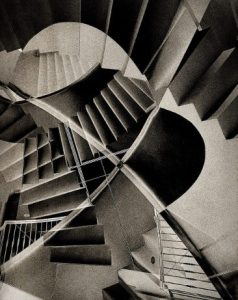לינדה נוכלין הלכה לעולמה . את המאמר פורץ הדרך שלה מ 1971 “Why Have There Been No Great Women Artists?” אי אפשר להגדיר אלא כקו פרשת מים : התבוננות מחודשת בשאלה מה יוצר אמנות גדולה, מה התנאים האמיתים שנדרשים ומדוע אפליה בגישה לחינוך, לאמצעים, כלפי נשים, וכנגזרת גם כל קהילה אחרת, מובילים להישגים פחותים. מידת ההשפעה הישירה והעקיפה של נוכלין על כל מי שנמצאת בתחום האמנות כיוצרת, אוצרת, חוקרת או מבקרת, מאז שנות ה 70 ועד היום, היא עצומה. האימוץ הציני שעשתה חברת דיור לאחרונה כששמה את המשפט ? Why Have There Been No Great Women Artists על חולצות הטריקו היקרות להחריד שלה מראה עד כמה הצליח המאמר לחרוג מהגבולות הצרים של עולם התרבות ולהשפיע במעגלים רחבים.

נוכלין היתה חוקרת דגולה של המאה ה 19 והתמחתה באמנות של קורבה שאת עבודתו הציגה ברטרוספקטיבה במוזיאון ברוקלין ב 1988 הנחשבת עד היום לתערוכה דפניטיבית של האמן . היא אצרה גם שורת תערוכות אמנות עכשווית חשובות ובין היתר היתה מהאוצרות של Global Feminisms: New Directions in Contemporary Art, ב 2007 ובאותה שנה גם כתבה מאמר מצוין על לואיז בורז’ואה . פגשתי בנוכלין וראיניתי אותה בעת ביקורה בארץ כשקיבלה דוקוטורט כבוד באוניברסיטה העברית. בפגישה אישית, היא היתה מצחיקה וחמה וחפה מגינונים , גאה במורשת המשפחתית היהודית שלה מבלי להפוך זאת לדגל.
ב 1971 “Why Have There Been No Great Women Artists?” היא כתבה ללא כחל ושרק על האפליה המובנית נגד נשים אך מעבר לכך גם ניתחה ללא רומנטיזציה את מהותה של אמנות בכלל, עובדה שלעיתים משתכחת וחבל :
The problem lies not so much with the feminists’ concept of what femininity is, but rather with their misconception—shared with the public at large—of what art is: with the naïve idea that art is the direct, personal expression of individual emotional experience, a translation of personal life into visual terms. Art is almost never that, great art never is. The making of art involves a self-consistent language of form, more or less dependent upon, or free from, given temporally-defined conventions, schemata or systems of notation, which have to be learned or worked out, either through teaching, apprenticeship or a long period of individual experimentation. The language of art is, more materially, embodied in paint and line on canvas or paper, in stone or clay or plastic or metal—it is neither a sob-story nor a confidential whisper.
“The fact, dear sisters, is that there are no women equivalents for Michelangelo or Rembrandt, Delacroix or Cézanne, Picasso or Matisse, or even, in very recent times, for de Kooning or Warhol any more than there are Black American equivalents for the same.. The fault, dear brothers, lies not in our stars, our hormones, our menstrual cycles or our empty internal spaces, but in our institutions and our education . . . everything that happens to us from the moment we enter this world of meaningful symbols, signs and signals. The miracle is, in fact, that given the overwhelming odds against women, or blacks, that so many of both have managed to achieve so much sheer excellence, in those bailiwicks of white masculine prerogative like science, politics or the arts.”






